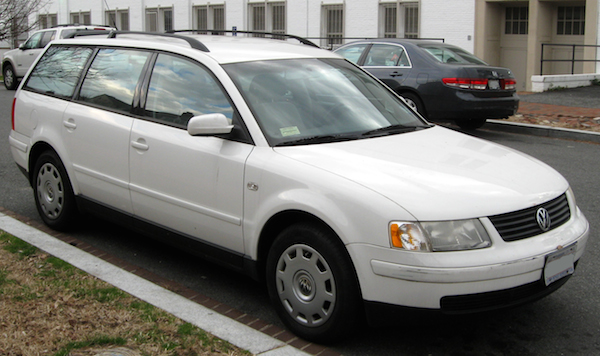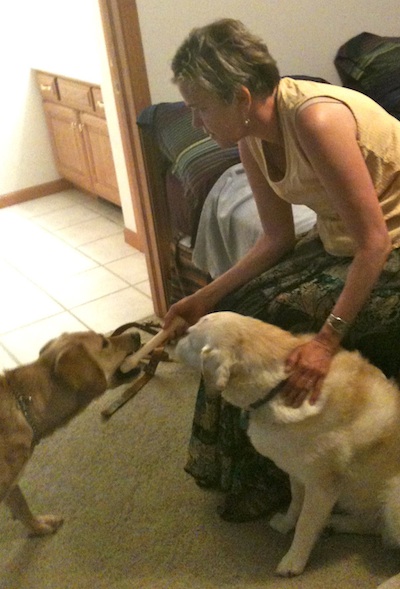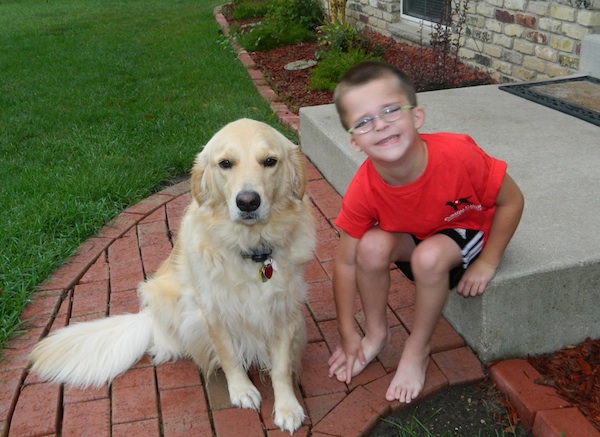
That’s Fritz (or a reasonable facsimile)
If you’ve seen Monty Python and the Holy Grail, you know the scene: The black knight keeps having body parts lopped off, keeps coming back for more, and is eventually left behind by his opposing knight, shouting “Come back here, I’ll bite your legs off!”
Well, that’s about where our trusted 1998 Volkswagen Passat is. An exhaust pipe fell off, just disappeared last week—and it now sounds like a diesel locomotive. The rear view mirror fell off the windshield, and I superglued it back on — three times. The key fob hasn’t worked for years, and now the locks are haunted — they go up and down on their own. There’s a mysterious water leak behind the driver’s seat. The gas cap door release control stopped functioning a few weeks ago, and I had to pry it open to put gas in.
The license plates expire on March 31. That’s the day I will donate the car to some poor unsuspecting charity, and we will begin a new era: Beth and I are going carless.
I’ve already signed up for Zipcar, a car sharing service, and between that and all the public trans options we have downtown, we should be fine. We’ll probably save some cash in the process. To be honest, I’ve been thinking about retiring our Passat for ten years, ever since we moved to Chicago. But you know, I’m just irrationally attached to the damn thing.
We bought it when we lived on the Outer Banks of North Carolina, so it carries some nice memories of cruising up and down the beach road with the windows down, the moonroof open, and marine air permeating everything. Our salesman was an African-born man named Fred. I met him when I did an exploratory shopping trip on my own—he said my wife would love the moon roof. Didn’t have the heart to tell him.
The only model they had on the lot was white—not my favorite color—but it would be cheaper (and faster) than ordering one. I came home to tell Beth that I liked the car, and explained about the white thing. We couldn’t decide, so Beth suggested we defer to our magic 8 ball. Will we buy the white Passat? Signs point to yes.
Gus still lived with us then, and one reason we liked the wagon was that the doors swung very wide open—easing the task of getting Gus in and out of the back seat. The cargo area was really large—making it easy to load his wheel chair in back without having to take the wheels off. In fact, we did not sign the contract until I went through that very test with Gus at the dealership.
The year was 1998, and I was awed by the technology—it had a trip computer that read out mileage, mpg, time, and temperature! It had electric windows (my first car ever with those)! Automatic locks! An indigo blue lit dashboard! ABS! Five airbags!
Just over 183,000 miles later, Fritz—as Beth nicknamed him—has lived on the ocean front, in Urbana, Ill., and on the mean streets of Chicago. I know other Passat owners have had trouble with theirs, but ours has been a champ, and to be honest—except for the roar of the engine, the car still runs like a top, and just hums at 75 mph. We’ve had a lot of great road trips in Fritzy. But it’s time.
Outside of one short stint in Washington, D.C., when I relied on my motorcycle and my roommate Pick for rides, I’ve had a car my entire adult life. So it’s kind of weird to contemplate. I know I’ll adjust. I certainly won’t miss the insurance costs, the monthly parking fees, the repair costs,.
But I think I will miss Fritz.
00





